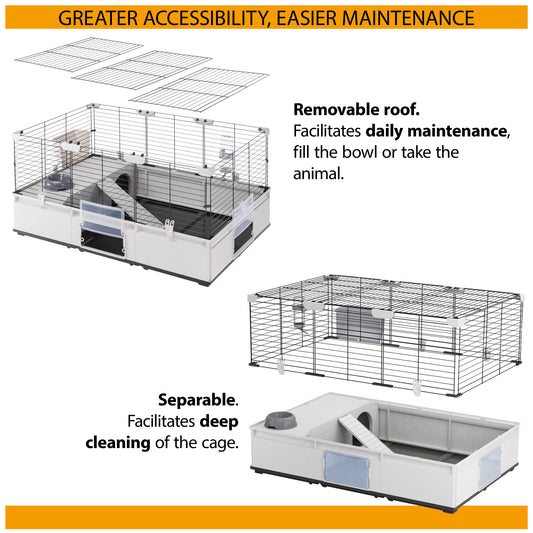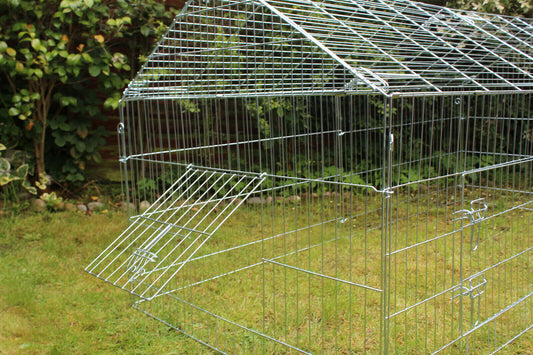Welcome to the art of feline finesse. Cat training doesn't have to be a herculean task. With love, patience, and understanding, you can create a harmonious home that both you and your feline companion will enjoy! Learn the best cat training tips to make your cat happy and well-behaved in this guide.
Firstly, let's acknowledge the importance of cat training. Training is not just about teaching your cat tricks or obedience. It's about enhancing their emotional and mental well-being, relieving stress and anxiety, and providing opportunities for socialisation. Training can be great for your cat, as it helps them feel safe and secure in their environment.
Now let's delve into what you might want to teach your cat. You may want to fix bad habits, like scratching furniture, or teach your cat fun tricks, like giving a high five.
Cat training goals include: litter box use, no scratching or jumping on furniture, no biting, following commands, and leash walking. Create a training plan that suits your unique cat, regardless of your choice.
One tried-and-true training method is using a clicker and treats. It's all about positive reinforcement, you know? A small "clicker" tool creates a brief noise that your cat learns to recognize.
You then follow this noise by giving your cat a treat, which helps them understand desirable behaviour. The cat quickly learns that the clicking sound equals a treat. Cat enthusiasts worldwide, including the renowned Jackson Galaxy, also favour this method.
It's crucial to keep training sessions short and engaging, adapting to your cat's behaviour, mood and interest. Cats have a shorter attention span than humans and prefer doing things how and when they want to. So, train your pet when they're interested and for as long as this interest lasts.
Remain calm, patient, and above all, persistent. They're their own bosses and pretty headstrong, so you're gonna need a heap of patience.
Always focus on one thing at a time. Cats can learn multiple things, but it's better to teach them one thing at a time for the best results. Let your cat master one task before moving on to a new one.
Rewarding good behaviour is a cornerstone of effective cat training. Cats respond well to positive reinforcement. Whenever your feline does something well, reward your cat with praise, a scratch, or a treat. You can also use the clicker every time you reward them, so they associate the objective, reward, and the clicker sound.
Remember, cats typically do not respond well to punishment. Instead, distract your cat when you spot inappropriate behaviour. For example, if they're scratching furniture, make a quick, sharp sound to distract them. Consistency with the sound choice is key, and avoid using common words like "hey" or "no" to avoid confusion.
It's also beneficial to involve other family members and frequent visitors in your cat's training. Everyone should know the training goal and method you're employing. Like this, they can react and give the same corrective measures when needed.
If you're bringing home a kitten, it's beneficial to start teaching them certain behaviours early on. Start socializing and grooming kittens early for an easier time handling them later on.
Correcting inappropriate behaviour is often the first step for many cat owners. Teach your cat to use the litter box and not to bite or scratch furniture.
Teach your cat to use the litter box in a quiet, easy-to-reach place. Keep it clean and fresh.
Put your cat in the litter box after they eat and scratch the sand with their paw until they pee. Repeat this several times. Always praise and reward your kitty after they’ve finished, but do not punish them for accidents outside of the box.
'Feeding time routines' are another critical area for cat obedience. Cats enjoy routines. Feeding them at the same time every day can help control their weight and stop them from begging or taking food. Use puzzle feeders or hide small portions of food around the house to tap into your cat's natural hunting instinct.
In training your cat not to bite, it's important to recognize why your cat bites in the first place. If they bite during play, stop the game as soon as they become too aggressive. Consistency with this method helps your cat understand that you won’t play with them if they’re too rough. Provide them with plenty of toys to ensure they get enough exercise and can express their predatory instincts.
For cats that scratch furniture, provide them with a scratching post where they can sharpen their claws. Distract your kitty with a sharp, uncommon sound whenever they scratch the furniture. Using the same sound every time can be beneficial. Please remember, declawing your cat is not a humane practice and will not solve the problem.
Remember, every cat is unique, and what works for one might not work for another. Practice patience and understanding, and soon you'll find a training routine that works best for you and your feline friend. Good luck, and enjoy this bonding experience with your kitty!
If you enjoyed reading this article, why not read:









